Shibori Guest Post: Cathy Ward
We received the following email from Cathy Ward: “I am very excited about the indigo class on Saturday! I went back to look at my blog post on when I visited the town in Japan that is famous for their shibori and I thought you might enjoy.” Well, we did — so much so we asked for her permission to “guest blog” for us, and she agreed. Thank you so much for sharing the experience and your beautiful photos with us, Cathy!
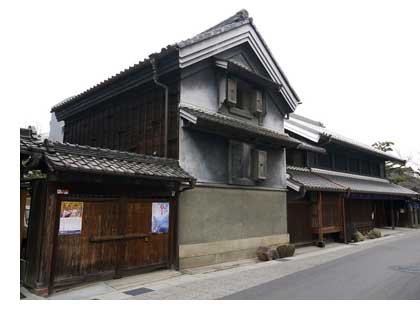
Arimatsu & Shibori
by Cathy Ward — ma vie trouvée (My found life: Traveling, eating, and creating art!)
The quaint town of Arimatsu is one of the most famous locations for shibori in Japan. I had read about it, so three of us "trailing spouses" hopped on the local train and headed about forty-five minutes outside of Nagoya for a visit. Eight families settled the town in 1608 and they have been creating this type of fabric ever since.
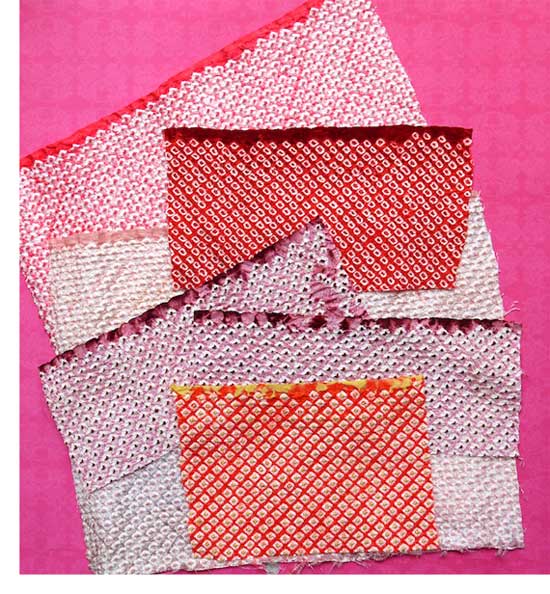
Shibori is the Japanese word for the different ways of embellishing textiles by binding, stitching, folding, or twisting and securing it with string before dyeing – basically a form of tie-dyeing. The fabrics shown here are scraps I bought created in this style.
In Japan, the earliest known example of cloth dyed with the shibori method dates back to the 8th century.
Shibori was originally an art of the poor. People could not afford to buy new clothing, so they would repair and dye their old clothing using the shibori technique. The intricate pattern hid stains well, as in the example pictured below.
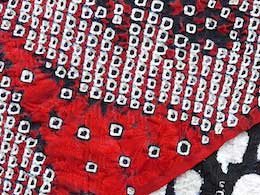
Eventually it became a technique of the rich, as a way to decorate the silk used for kimonos. There is a wonderful little museum in the town, Arimatsu-Narumi Shiborikaikan, where you can watch women creating many of the complex designs.
The basic technique of shibori is to draw a design on a piece of fabric (usually silk or cotton), then tie very tight knots with thread around points of the fabric. These women are so skilled they no longer need a pattern.
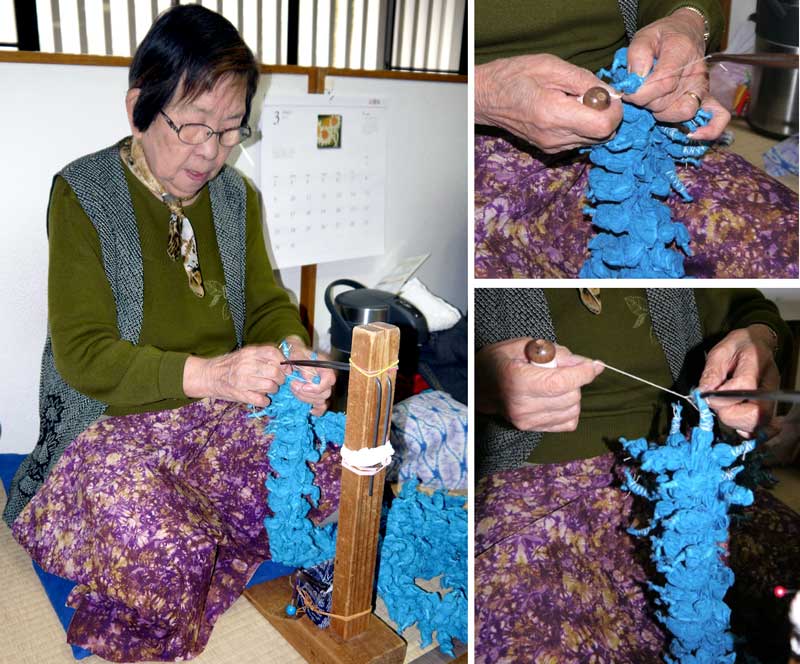
Which technique is used in shibori depends not only on the desired pattern, but the characteristics of the cloth being dyed. Also, different techniques can be used in conjunction with one another to achieve even more elaborate results.
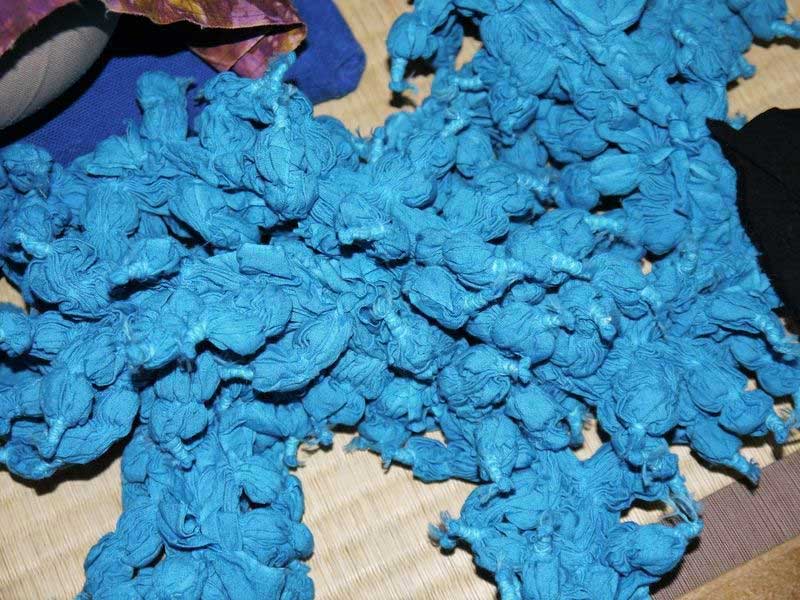
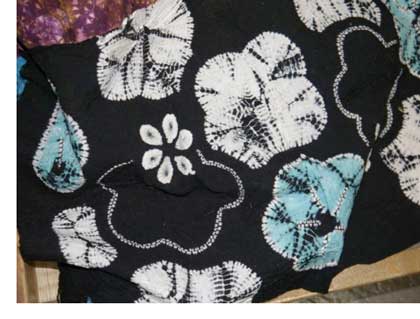
I can’t image the time it takes to create one piece of material. Above is what it looks like just before dyeing...
Since the dye does not penetrate the knots, when they are untied there is a pattern of dyed and un-dyed areas. The fabric pictured at right is similar the pattern she was making.
These women were not young to be sitting all day in what is called “seiza position” (literally “proper sitting”) while they worked.
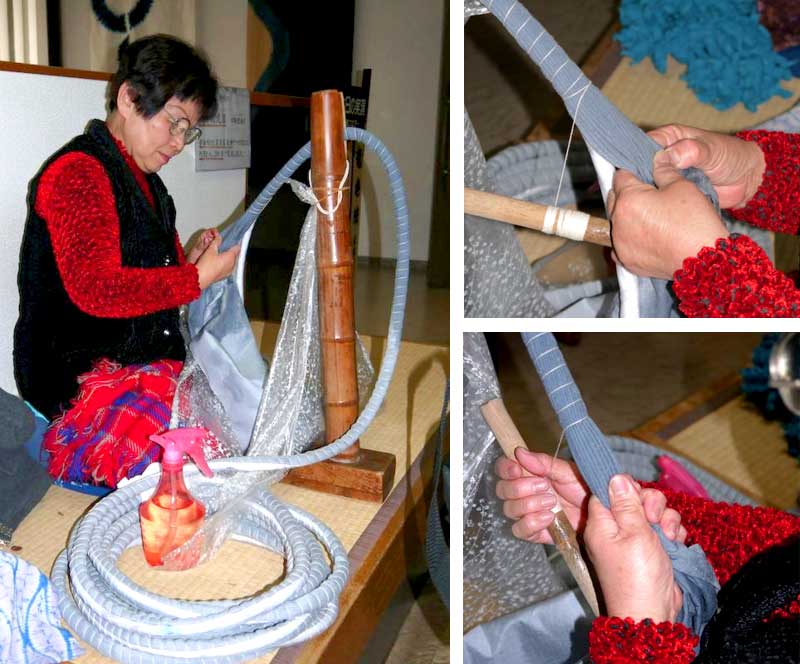
Pictured above, this woman is actually folding the material in a fan pattern before wrapping the thread around it. See the water bottle? She sprayed the fabric periodically, probably making it easier to fold.
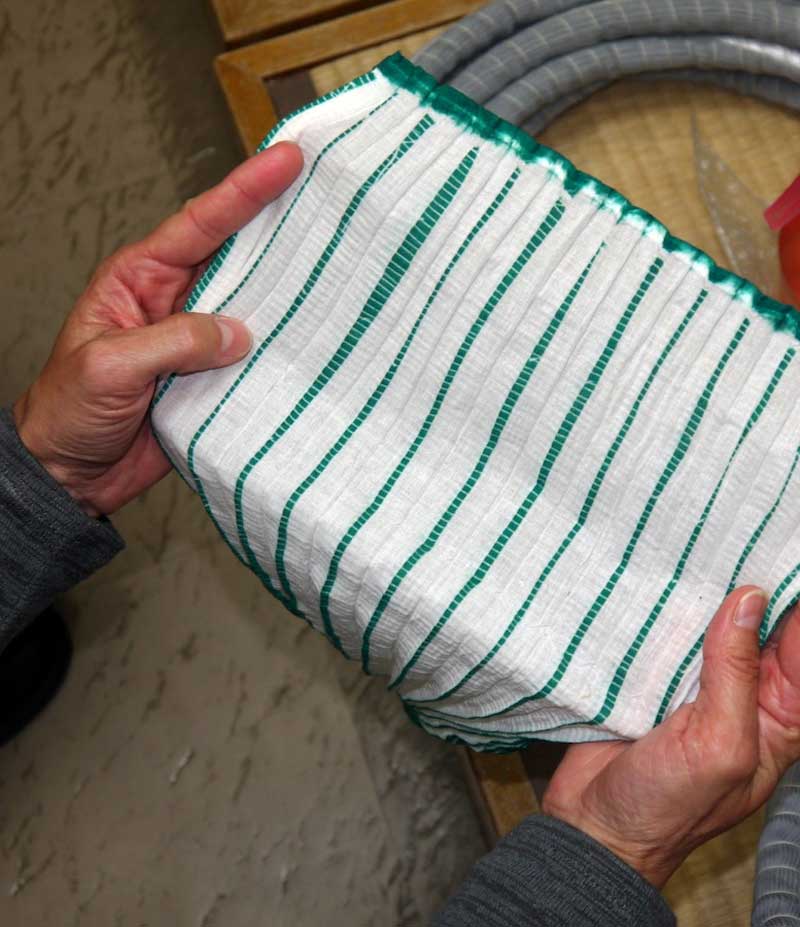
Her fabric will turn out like the one pictured above They did not speak English, but were able to communicate through their art. We also saw a video on the process, which was in English and very helpful.
Here are a few samples of different fabric in the museum. Indigo blue with white is the most traditional color, but today it is made in many of colors.
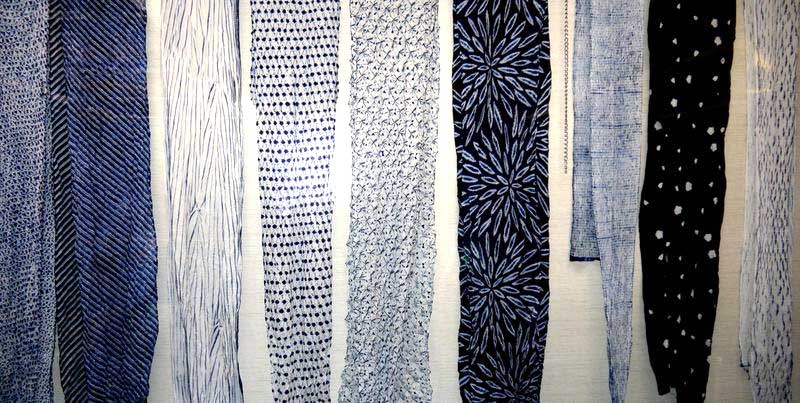
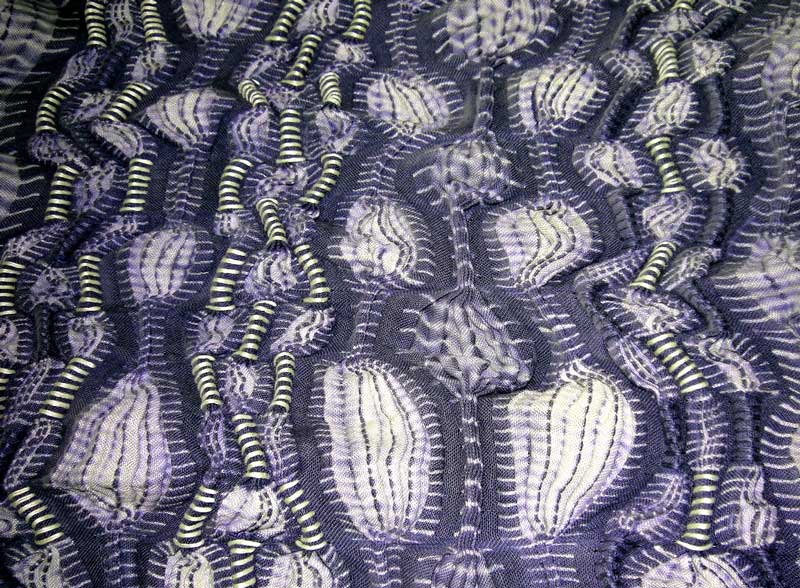
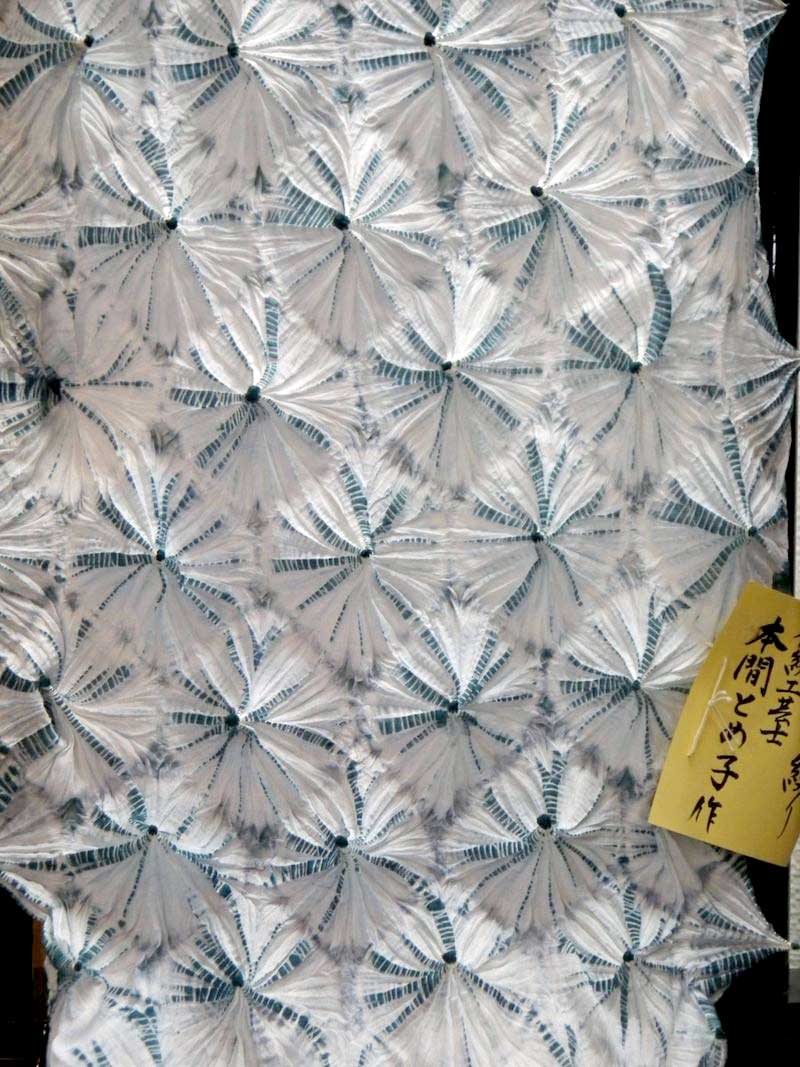
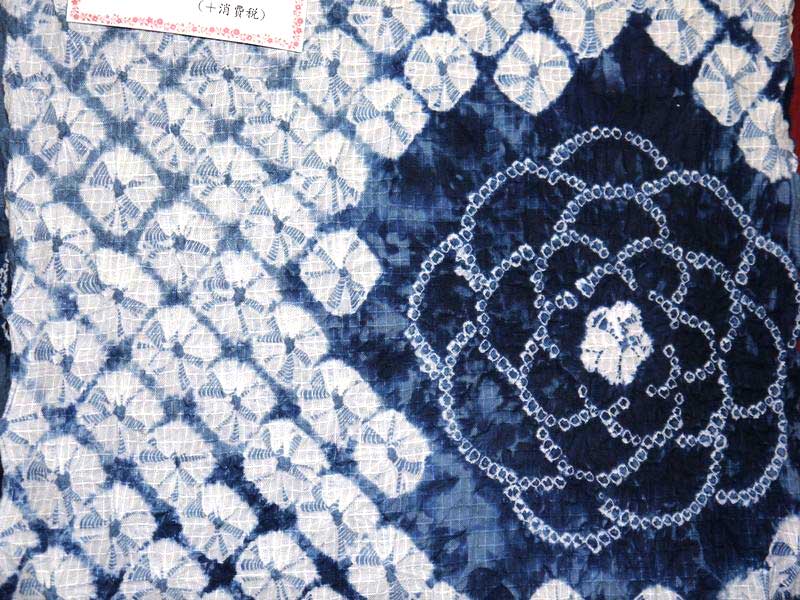
Pictured below is a scarf I bought — love the colors and the texture. It was made from linen, not silk.
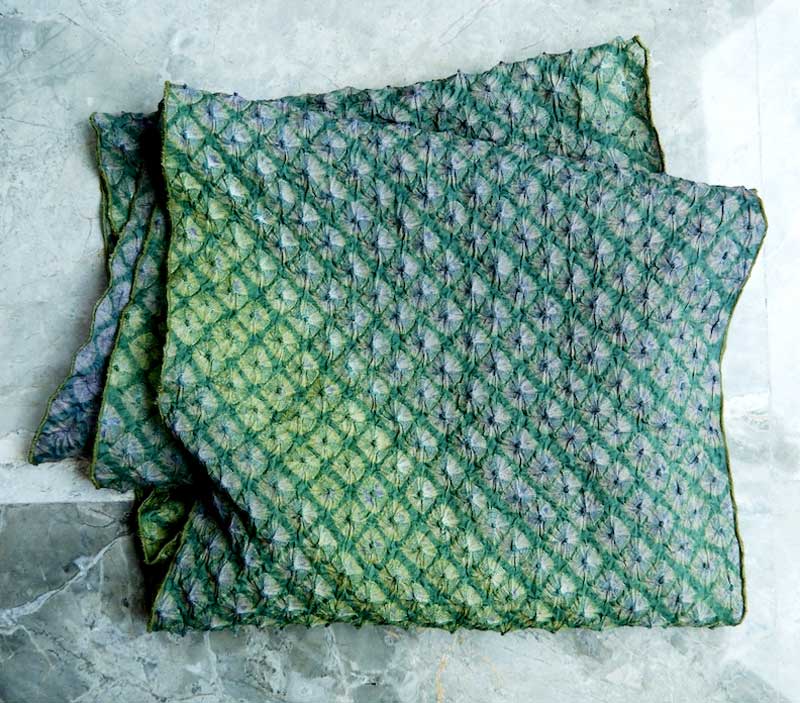

Pictured above are more scraps I bought. You know me, always collecting!
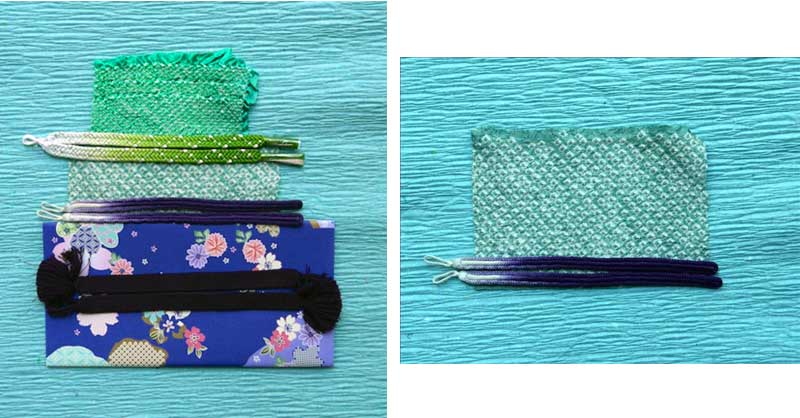
I am starting to see collages with the scraps I purchased!
My last item to share is pictured below: a small purse I purchased that was made from some of the shibori fabric. This is the style they carry with kimonos.
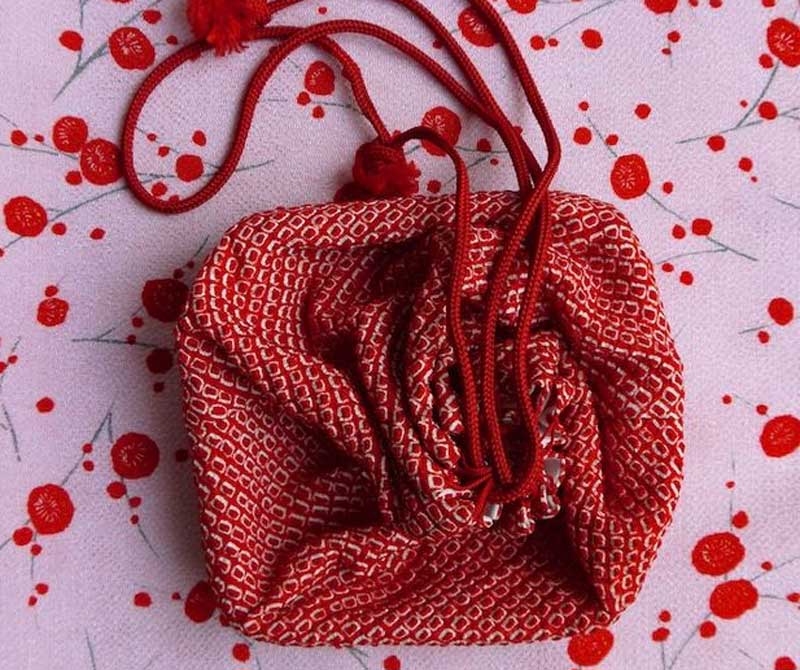
I hope this post inspires you — maybe you can wrap and dye some fabric using this special technique and see what you come up with. And be sure to share it with me!



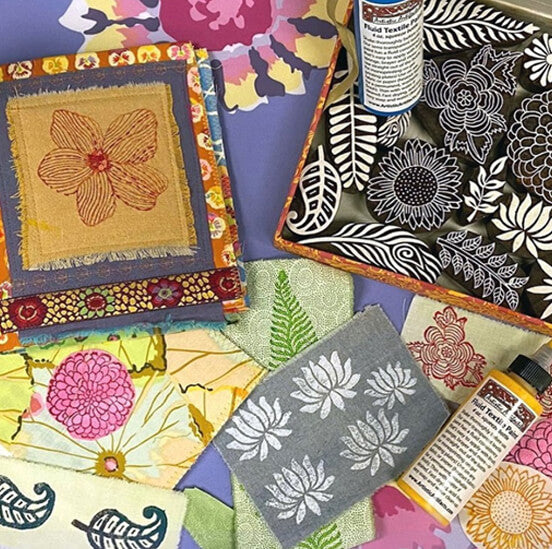


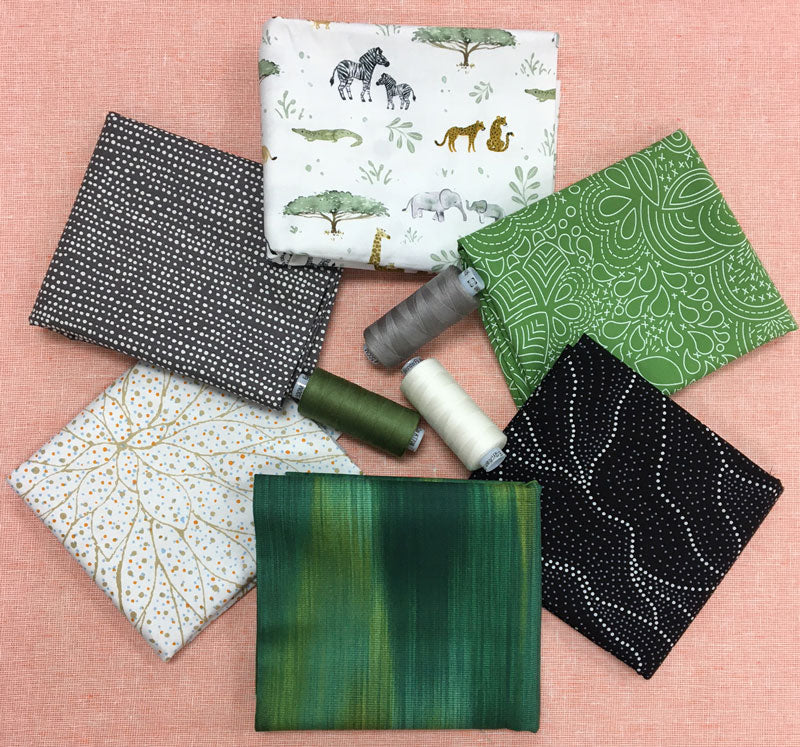
Leave a comment